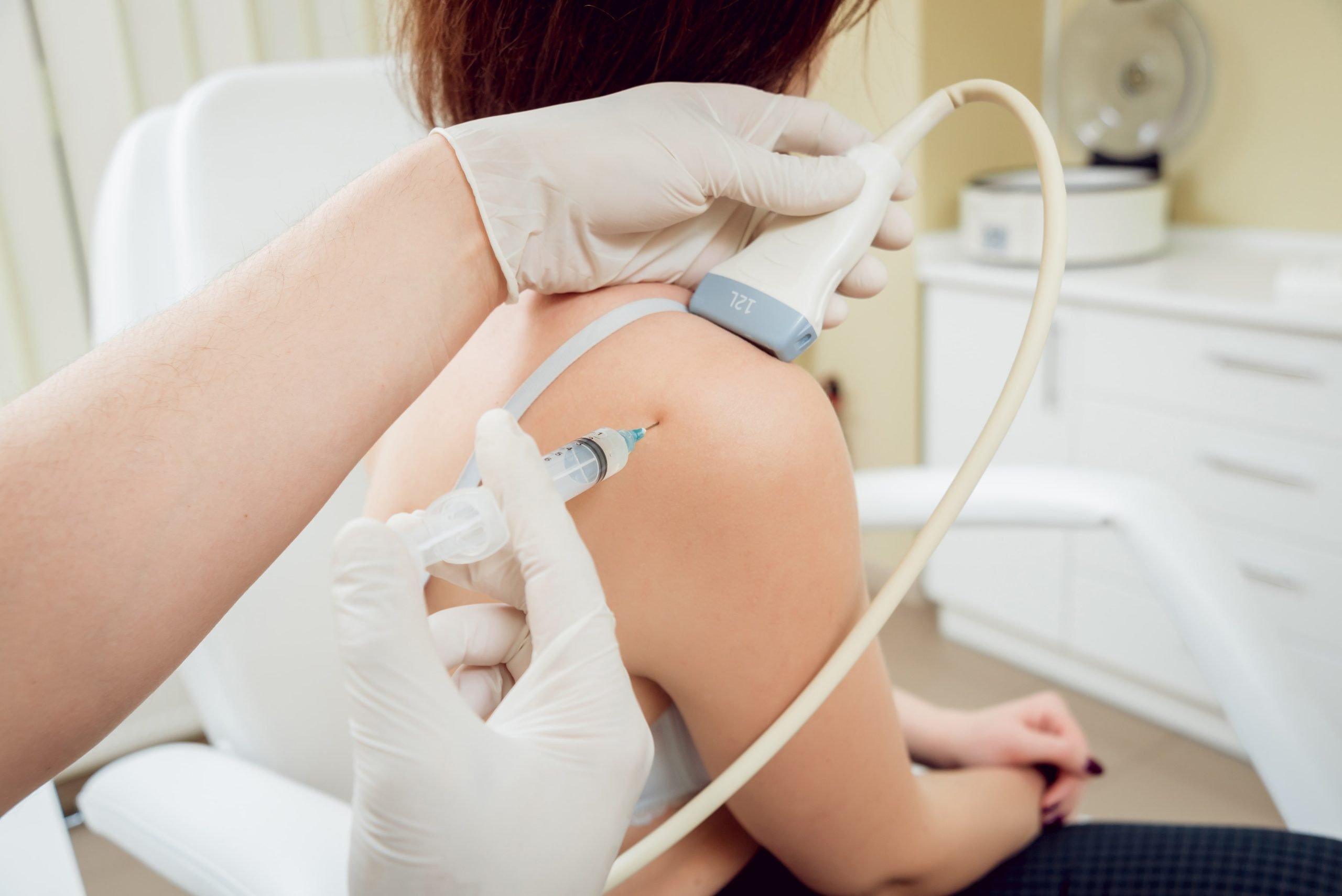Inflammation of the bursa post vaccination
How can ultrasound help?

Bursa Inflammation post vaccination: How can ultrasound help?
Posted on Thu May 5, 2022
Ultrasound and X-rays are used to acquire clear images of your body, examining areas which may be of concern. Ultrasound is used to investigate your soft tissue. MSK (musculoskeletal) ultrasound is used to investigate muscles and joints and an MSK sonographer will have had specialist training in muscles, ligaments, tendons and nerves. For anyone who is having pain in their joints or muscles, an MSK ultrasound can be used to investigate the issue.
We sat down with Alok Kashyap, an Advanced Practitioner, Sports Physiotherapist and an MSK sonographer, provides diagnostic scanning and ultrasound guided injections. He also investigates and diagnoses a wide range of issues, including problems in the shoulder area. Alok is passionate about ultrasound and shares this passion by teaching professionals.
We asked Alok which was the most common shoulder injury he was required to investigate, and he confirmed that following vaccinations, he had a seen a number of patients expressing issues with their shoulder, in particular an inflammation of their bursa. These patients had been complaining to their GP of a shoulder injury – following their vaccination. Looking at their ultrasound findings, Alok could see inflammation of the bursa, and sometimes related with calcifications.
Mr. Kashyap said that generally the most common shoulder injury were tendinopathy changes, partial tears, full thickness tears and bursa inflammation. However, with the roll out of the COVID-19 vaccinations countrywide, inflammation of the bursa post vaccination has become a common complaint.
People experiencing SIRVA or shoulder injury related to vaccine administration, often don’t realise that their shoulder pain is due to a poorly given vaccination. The symptoms can include the following: –
- Bursitis
- Tendonitis
- Frozen shoulder
- Pain
- Stiffness
- Limited range of motion
The Bursa
The bursa is a closed sac of fluid which acts as a cushion. There are two bones, the upper bone is called the acromion, and the lower bone is the humeral head. Between these two bones there is a space where you have a tendon called supraspinatus, and above that is your bursa. The bursa circulates all around the rotator cuff tendon. It’s a fluid that’s generally not seen in a normal patient.
Alok explains that “sometimes, if you have flare ups or if you have impingement or you have tears, those bursas are inflamed, and it becomes really thick and that can produce some pain when you move or especially if you lay on the same side. If it is inflamed then you can see some thickening of the bursa, otherwise generally on a normal patient is not seen or is minimally thickened.”
Best Treatment for Inflammation of the Bursas post Vaccinations
Alok feels that steroid injections into SASD (subacromial-subdeltoid bursa) are the best treatment for an inflammation of the bursa. ‘Subacromial’ literally means below the acromion. He uses this avenue mainly for patients who have pain at certain angles and impingement. If a scan reveals those findings, then it’s usual that a steroid injection will alleviate the symptoms. “If conservative management such as anti-inflammatory and physiotherapy have failed, then an ultrasound scan and guide towards steroid injections is appropriate.”

For patients who have moderate to severe inflammation of the bursa, particularly in cases of rheumatoid arthritis where there’s massive inflammation of the bursa and any sort of negative arthritis, it’s always good to get a diagnosis from a rheumatologist and work with him/her. If it’s decided that an injection is needed, then we can target with injection as well.
Ultrasound guided injections enable the practitioner to watch the extremely fine needle being injected into the sub-acromial bursa in real time. This helps make the procedure extremely accurate, and patients frequently comment on lack of discomfort and quicker results.
Other Common Shoulder Injuries
We often come across acute flare-ups associated with calcific tendinopathy which can be extremely painful. Another common condition is frozen shoulder, which is easy to treat if caught in the early stages but can take up to two years to resolve if left.
Scans of elderly people often show up partial tears, full thickness tears and complete tears and often this is just part of the aging process. Injuries in younger people are usually due to trauma.
Final Words from Alok Kashyap
Alok concluded by saying that being in the ultrasound sonography field has completely changed his approach towards treatment and towards patients. He feels that if you have that kind of skill, it empowers you. You can actually see the condition and fully explain it to the patient at the same time. They immediately take on board what management needs to be done, so you can guide more towards the intervention. And if, for example, you’re injecting on the same day, the patient goes home very happy, reducing wait times massively.
Share this article
Most Recent
Posted on Thu Jul 3, 2025
How Long Does A Shoulder MRI Take?
Posted on Thu Jul 3, 2025
Posted on Tue Jul 1, 2025
Stay up to date
If you’re interested in keeping up with what we’re doing, just leave your email address here and we’ll send you periodic newsletters and other updates.





